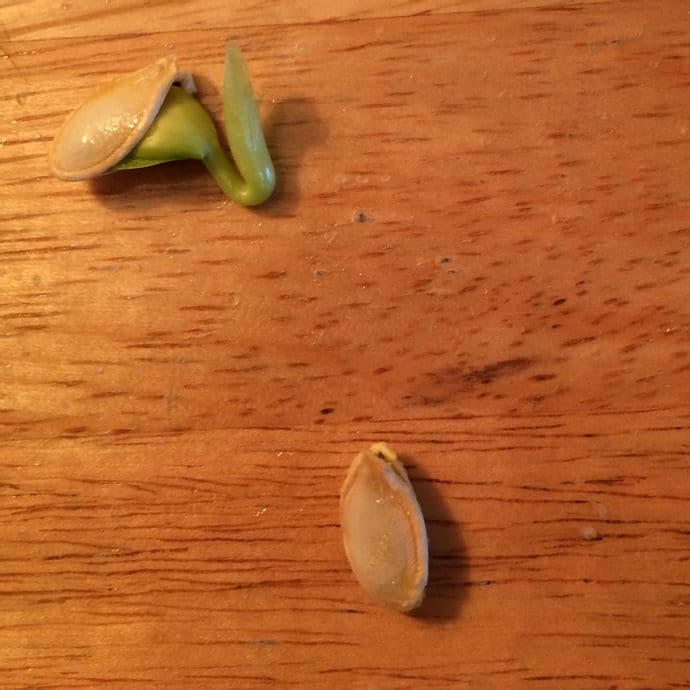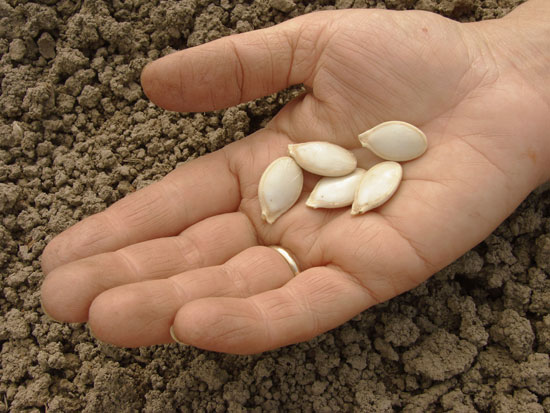To germinate squash seeds, ensure you provide them with the right conditions such as warm soil and consistent moisture.

Credit: www.eatortoss.com
How to Germinate Squash Seeds: Step by Step Guide
Choosing The Right Squash Seeds
Choosing the right squash seeds is crucial for successful germination. One important factor to consider is determining the variety of squash you want to grow. Different varieties have specific requirements for growing conditions and yield. Make sure to research and select a variety that suits your needs and the climate of your region.
Another essential aspect to consider is selecting high-quality seeds. Look for reputable seed suppliers that offer organic, non-GMO, and certified seeds. It’s important to choose seeds that are free from diseases and pests to ensure healthy plants.
Checking the seed viability is also important before germination. A simple viability test can be performed by placing a few seeds on a damp paper towel and keeping them in a warm place for a few days. If most of the seeds germinate, it indicates good seed viability.
| Tip: |
|---|
| When choosing squash seeds, consider the variety and select high-quality seeds from reputable suppliers. Test the seed viability before germination to ensure successful sprouting. |
Preparing The Planting Medium
When germinating squash seeds, it is crucial to prepare the planting medium properly. One key aspect is choosing the right soil. Opt for a well-draining mix to prevent waterlogged roots and promote healthy seed growth. To further enhance the soil’s quality, it’s recommended to incorporate organic matter.
This helps to improve moisture retention, nutrient availability, and overall soil structure. Organic matter also encourages beneficial microbial activity, which aids in root development. By following these guidelines, you can create an ideal environment for squash seed germination.
Germination Methods
To successfully germinate squash seeds, there are various methods you can choose from. One option is direct sowing in the garden, which involves planting the seeds directly into the soil. Another method is germinating the seeds indoors. This can be done by utilizing seed starting trays or pots, which provide a controlled environment for optimal germination.
When using seed starting trays or pots, it is important to ensure that they are filled with well-draining soil and placed in a warm and well-lit location. Additionally, maintaining consistent moisture levels is crucial for successful germination. By following these methods, you can increase the chances of successfully germinating squash seeds and ultimately enjoy a bountiful harvest.
Sowing Squash Seeds Outdoors
| Preparing the planting area | Planting seeds at the right depth | Providing adequate spacing |
|---|---|---|
| Clear the area of any weeds or debris to create a clean planting bed. | Plant the squash seeds at a depth of 1 inch (2.5 cm) in the soil. | Space the seeds at least 24 inches (61 cm) apart to allow room for their growth. |
| Improve the soil quality by adding compost or organic matter. | Water the seeds immediately after planting to ensure proper moisture. | Avoid overcrowding by thinning the seedlings once they reach a few inches in height. |
| Avoid planting in areas prone to standing water or excessive shade. | Keep the soil consistently moist, but avoid overwatering which can lead to rot. | Provide support for vining squash varieties to prevent them from trailing on the ground. |
Germinating Squash Seeds Indoors
To successfully germinate squash seeds, it’s important to prepare the seed trays properly. Start by choosing a tray with drainage holes to prevent waterlogging. Fill the tray with a moistened seed starting mix, ensuring it’s evenly distributed. The next step is sowing the seeds at a depth of about an inch. Gently press the seeds into the soil and cover them lightly. It’s crucial to create the ideal germination conditions by placing the tray in a warm and sunny location.
Alternatively, you can use a seedling heat mat to maintain a consistent temperature. Keep the soil consistently moist but not soaked throughout the germination period. With these simple steps, you can ensure successful germination of your squash seeds and set them up for healthy growth.
Caring For Germinating Squash Seeds
Germinating squash seeds requires proper care to ensure successful growth. Temperature and light conditions play a crucial role in the germination process, so it’s important to provide the right environment. **Optimal temperature** for squash seed germination is around 70-85°F (21-29°C). **Provide ample sunlight or use grow lights** to ensure the seeds receive adequate light.
Watering the seeds appropriately is another important aspect to consider. **Keep the soil consistently moist**, but avoid overwatering as it can lead to rotting. **Water the seeds gently** to prevent displacement and damage to the delicate seedlings.
Furthermore, protecting the seeds from pests and diseases is essential for successful germination. **Use organic pest control methods** to keep insects and pests at bay. Cover the seeds with a **light row cover or netting** to protect them from birds and other animals. Regularly monitor the seeds for any signs of disease or infection and take appropriate measures if needed.
Monitoring Seed Germination Progress
Germinating squash seeds is an exciting and rewarding process. Monitoring the progress of seed germination is crucial for successful growth. Recognizing signs of germination is the first step to ensure your seeds are on the right track. Keep an eye out for tiny white roots emerging from the seeds, indicating that germination has begun. It usually takes around 7 to 10 days for squash seeds to germinate, but different varieties may have slightly different timeframes.
If you encounter any issues during germination, troubleshooting is essential. Common problems include seeds not germinating at all or seedlings dying soon after germination. Some possible causes can be improper temperature, inadequate moisture levels, or poor seed quality. Ensuring the right conditions, such as keeping the seeds warm and providing sufficient moisture, can help overcome these challenges.
In conclusion, monitoring seed germination progress, recognizing signs of germination, and troubleshooting common issues can greatly increase the success rate of germinating squash seeds. With proper care and attention, you’ll soon see your squash plants thriving.
Transplanting Seedlings
Germinating squash seeds is a crucial step in starting your home garden. Transplanting seedlings is one of the key stages in the germination process. Before transplanting, preparing the transplanting area is essential. Clear the selected area of weeds and debris, ensuring it’s free from any obstructions. Create small holes or depressions in the soil to accommodate the seedlings. When handling and transplanting seedlings, gently remove them from their containers, ensuring the roots are intact. Place each seedling into the prepared holes, making sure they are at the same depth as they were in the container.
After transplantation, ensuring proper post-transplant care is vital. Water the seedlings regularly, keeping the soil moist but not waterlogged. Protect the young plants from extreme temperatures and pests, providing them with the necessary nutrients for healthy growth. By following these steps, you can successfully grow squash from seeds and enjoy a bountiful harvest.
Finalizing The Germination Process
Germinating squash seeds requires careful attention and ongoing care. Once you have finalized the germination process, it is important to provide continuous care for your squash plants. Regularly water the plants, making sure the soil is moist but not waterlogged. It’s also crucial to monitor the plants for any signs of pests or diseases and take appropriate action to prevent any damage.
Understanding when your squash plants are ready for harvesting is essential. Harvesting too early or too late can impact the quality of the fruits. Look for indicators such as the color and size of the squash, as well as the texture of the skin. Harvesting at the right time ensures that you can fully enjoy the flavor and texture of your squash.
If you have excess squash seeds, storing them properly for future use is a great option. Ensure that the seeds are fully dried before storing them in a cool and dry place. Consider using airtight containers or resealable bags to keep the seeds fresh and protected from moisture and pests. By storing your excess squash seeds, you can continue to grow delicious squash plants in the future.
Frequently Asked Questions On How To Germinate Squash Seeds
What Is The Best Way To Germinate Squash Seeds?
To germinate squash seeds, follow these steps: 1. Soak the seeds in water overnight. 2. Fill a seed tray with seed starting mix. 3. Place the soaked seeds on the mix, about an inch apart. 4. Cover the seeds with a thin layer of soil.
5. Water the tray and keep it in a warm, well-lit area. Germination should occur within a week. Remember to keep the soil moist but not waterlogged during the germination process.
Do Squash Seeds Need Soaking?
No, squash seeds do not require soaking before planting. Simply plant the seeds directly into well-prepared soil or seed trays. Make sure to provide adequate sunlight, water, and proper care for successful growth. Happy planting!
How Do You Start Squash From Seed?
To start squash from seed, first, choose a sunny planting location. Prepare the soil by loosening it and adding organic matter. Then, sow the seeds directly into the soil, about 1-2 inches deep and 2-3 feet apart. Keep the soil moist but not waterlogged, and the seeds will start to germinate in about 7-10 days.
How Do You Prepare Fresh Squash Seeds For Planting?
To prepare fresh squash seeds for planting, start by removing them from the squash. Rinse them well, removing any pulp or debris. Allow the seeds to dry completely before storing them in a cool, dark place. They will be ready for planting when the time comes.
Conclusion
Successfully germinating squash seeds requires proper preparation, timing, and care. By using the right growing medium, providing adequate moisture and warmth, and following the steps outlined in this guide, you can ensure a high germination rate for your squash seeds.
Remember to keep the soil moist but not waterlogged and provide sufficient sunlight for healthy seedling development. With a little patience and attention to detail, you’ll soon be enjoying the fruits of your labor in your own homegrown squash harvest.
Happy gardening!

